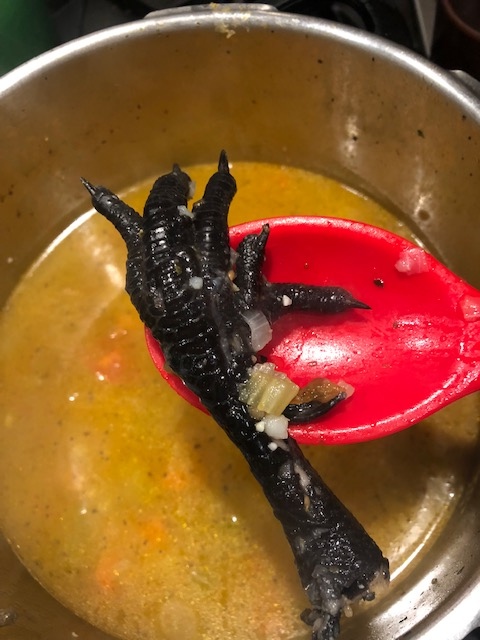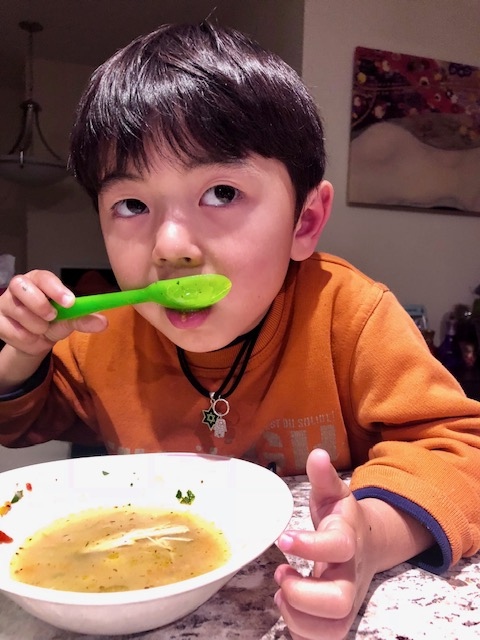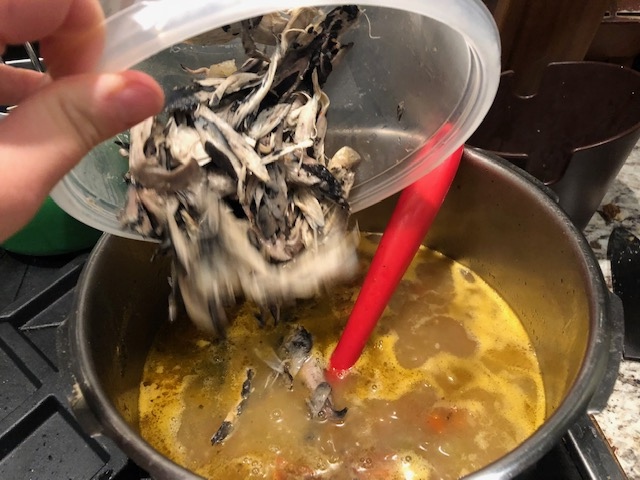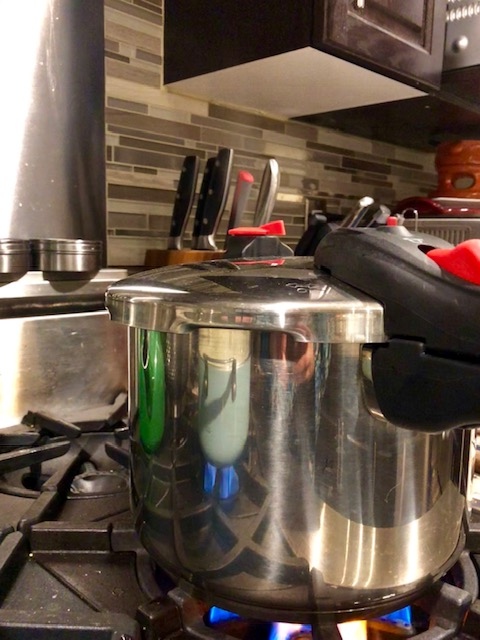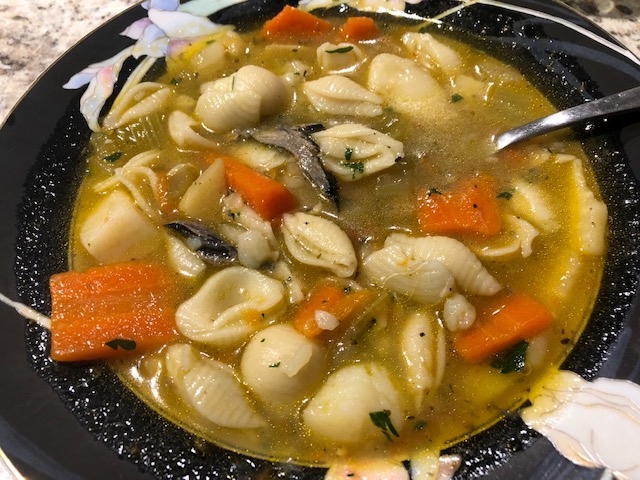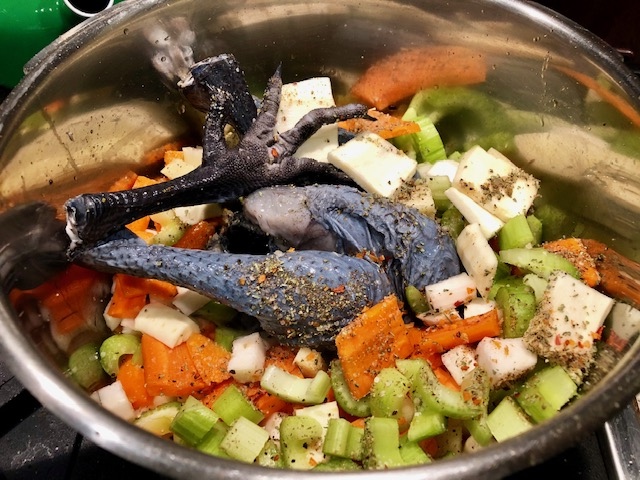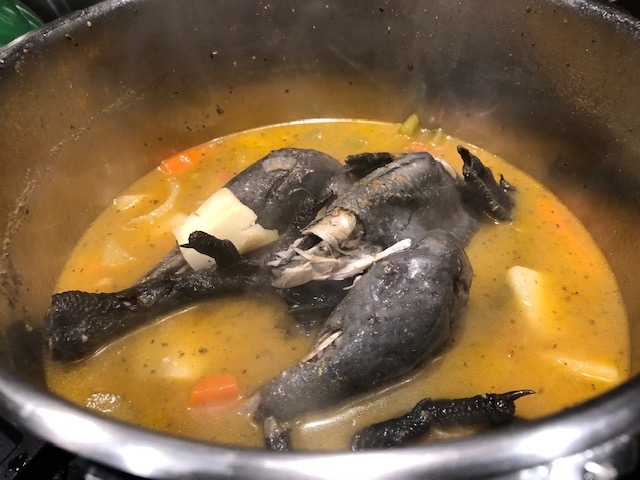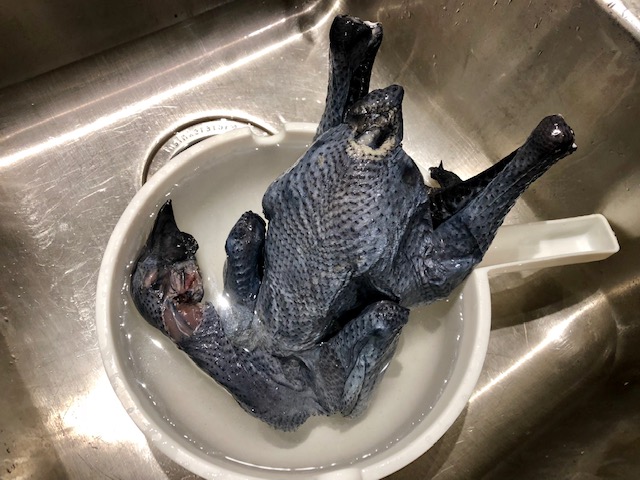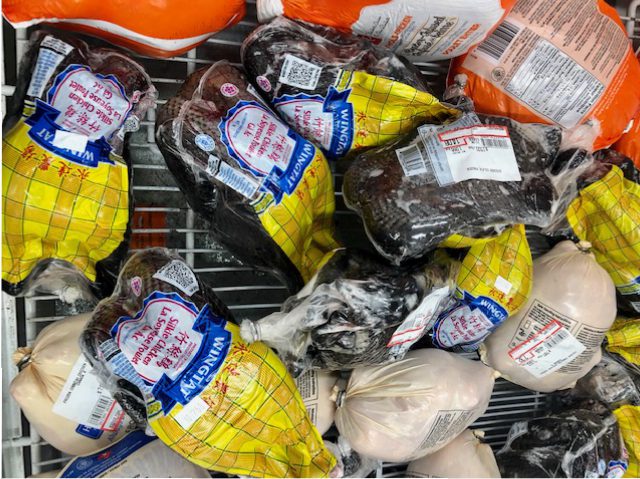When I have to treat infertile women most of them get my recipe of Black-Bone Silky Fowl to help improve their fertility levels and to make immune system stronger specially when they are dealing with procedures before IVF like laparoscopic, Endometrioma removals or healing from miscarriage or simply to feel more energetic. This broth is consumed as a healthy food and used particularly as a kind of traditional Chinese medicine. But when you show them the picture of the chicken in the pan they believe is a hallowen horror dish. My advice is ” be brave” deal with this as you deal with any piece of chicken from the store but will have black skin, feet and head. And you will have a Plus, taste even better ! You can do it and it s worthy. Most of these chickens are organic and free run because they are used for healing purpose, so they don’t add antibiotics so don’t be afraid to buy it! You can visit farms in Taiwan like I did where you can interact with them and they are quite good pets too. I had chance to eat this delicacy in a restaurant in Taipei where most of the others Doctors who were there for their TCM training like me did not wanted to try because looked ugly. Too bad, they lost their chance to taste an amazing traditional Taiwanese dish and it was expensive, so I ate more than one plate! The chicken will be frozen so you have to leave in the fridge for 24 hours before you prepare it. But It is very easy to make it you just need to find where they sell it. Most of Chinese Markets will have it but for my surprise this time I found at Superstore on Grant Avenue, Winnipeg. My kids choose it. I was dealing with Pneumonia and my lungs were hurting even after taking antibiotics to the end. Two nights on this recipe the pain ended.
I was trying to search more info and history about Silkie chickens and I got this from an Australian website called :
silkies :Emperor Qian Long of the Qing Dynasty named the Taihe chicken as ‘Wushan Chicken’. This came about in the early years of the Qing Dynasty. Tu Wenxuan from Wushan, Taihe sent silkie fowl to the Emperor Qian Long. The Emperor ate the chicken and was impressed with its flavour. Tu Wenxuan was appointed as an official and the chicken was renamed as “Wushan Chicken”. From In the late Qing Dynasty, there was a disaster that killed almost all people and silkies Wushan. In the 1930’s, two scientists in Jiangxi province collected 10 Taihe Silkie, with 2 cocks and 8 hens from the peasants, in order to save the silkie fowl which was on the brink of extinction. Until 1938, silkie fowls that remained in Taihe only numbered in the hundreds. In 1944, the Japanese attacked and occupied Nanchang, then bombed Taihe. The original Taihe silkie fowls were almost totally wiped out. In order to protect the original Taihe silkie fowl, scientists there disguised as peasants, at the risk of life, to raise the silkie fowl until the end of the war. In 1959, the Jiangxi Taihe Wushan Original Chinese Farm was established.
- 1/3 cup of Tibetan Goji berries ( goji berries are also known as wolfberries or western snowberries), add with all the ingredients
- 10 Chinese red dates put in the pan with the other ingredients ( These dates are red, soft on the outside, with a sweet smell. The inside is soft and moist. They are readily available from a Chinese market or grocer, throughout the year, all around the world.)
- Substitute the pasta shell for 1 cup and 1/2 of Chinese pearl barley , yi mi shui (薏米水) / also known as Job’s tears, coix seed that you will cook with the others ingredients. As coixseed has a high nutritional value, it is known as the “king of the gramineous plants in the world”. Job’s Tears is a nutty, gluten-free grain found in Asian grocery stores and in Chinese herbal boutiques. One serving (50 g or 1/3 cup of uncooked Job’s Tears) has 190 calories, 33 g of carbohydrate, 7.5 g of protein, 5.7 g of fiber.


